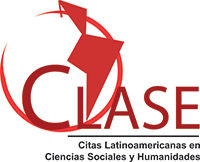Seniority and experience as key factors in management skills for SMEs to achieve business competitiveness
Antigüedad y experiencia como factores clave de habilidades de gerencia de las Pymes para lograr competitividad empresarial
##plugins.themes.bootstrap3.article.main##
Objective: To evaluate the influence of managerial skills related to seniority and experience on the competitiveness of small and medium-sized enterprises (SMEs) in Hermosillo, Mexico.
Methodology: Mixed-methods design; an initial exploratory phase using an expert panel and the Delphi method to contextualize and validate the instrument. This was followed by a quantitative phase involving surveys of 108 companies and a structural equation modeling (SEM) analysis. Results: Managerial skills evolve according to managers' experience. During the first few years, these skills focus primarily on human and financial resource management, and less on strategic planning and management skills. These skills, along with globalization skills, are enhanced in managers with more than ten years of experience. Conclusions: Managerial skills are an internal factor in SMEs that influence business competitiveness and evolve alongside managers' experience.
Downloads
##plugins.themes.bootstrap3.article.details##
Alom, F., Abdullah, M. A., Moten, A. R., & Azam, S. F.(2016). Success factors of overall improvement of microenterprises in Malaysia: an empirical study. Journal of global entrepreneurship research, 6(1), 7-15. DOI: https://doi.org/10.1186/s40497-016- 0050-2
https://doi.org/10.1186/s40497-016-0050-2
Bagozzi, R.P. (1981). Evaluating structural equations models with unobservable variables and measurement error: A comment, Journal of Marketing Research, 18(3), 375-381. DOI: https:// doi.org/10.1177/002224378101800312
https://doi.org/10.1177/002224378101800312
Barclay, D.W., Higgins, C.A., y Thompson, R. (1995). The partial least squares approach to causal modeling: personal computer adoption and use as illustration, Technology Studies, 2(2), 285-309.
Chiavenato, I. (2014). Teoría general de la administración. México: Editorial Prentice hall.
Chin, W.W. (1998). The partial least squares approach for structural equation modeling. En Marcoulides, G.A. (Ed.). Modern methods for business research. London: Lawrence Erlbaum Associates.
Coque Martínez, J., Díaz Bretones, F., & López Mielgo, N. (2013). Factores para la puesta en marcha y el éxito de microempresas asociativas creadas por jóvenes egresados universitarios. REVESCO. Revista de Estudios Cooperativos, 112, 66-94.
https://doi.org/10.5209/rev_REVE.2013.v112.43063
Coronel de Renolfi, M.; Cardona, G. (2009). Tipificación de Pymes mediante técnicas de análisis multivariado, el caso de la ciudad de Santiago del Estero en Argentina. Revista Pymes Tec Empresarial, 3(1), 45-54.
Crissien, J. (2006). Espíritu empresarial como estrategia de competitividad y desarrollo económico. Revista Escuela de Administración de Negocios 57, 103-117.
https://doi.org/10.21158/01208160.n57.2006.376
Dijkstra, T.K., & Henseler, J. (2015). Consistent and Asymptotically Normal PLS Estimators for Linear Structural Equations, Computational Statistics & Data Analysis, 81(1), 10-23. DOI: https://doi. org/10.1016/j.csda.2014.07.008
https://doi.org/10.1016/j.csda.2014.07.008
Esposito, V.V., Trinchera L., & Amato S. (2010). PLS Path Modeling: From Foundations to Recent Developments and Open Issues for Model Assessment and Improvement. En: Esposito Vinzi V., Chin W., Henseler J., Wang H. (Eds.). Handbook of Partial Least Squares. Springer Handbooks of Computational Statistics. Springer, Berlin, Heidelberg.
Fabi, B., Raymond, L., & Lacoursière, R. (2007). HRM practice clusters in relation to size and performance: An empirical investigation in Canadian manufacturing SMEs. Journal of Small Business & Entrepreneurship, 20(1), 25-39. DOI: https://doi.or g/10.1080/08276331.2007.10593384
https://doi.org/10.1080/08276331.2007.10593384
Falk, R.F. & Miller, N.B. (1992). A Primer for Soft Modeling, The University of Akron Press: Akron.
Fornell, C., & Larcker, D.F. (1981). Evaluating structural equation models with unobservable variables and measurement error, Journal of Marketing Research, 18, (1), 39-50. https://doi. org/10.1177/002224378101800104
https://doi.org/10.1177/002224378101800104
Franco, M. A., & Urbano, D. (2010). El éxito de las pymes en Colombia: un estudio de casos en el sector salud. Estudios gerenciales, 26(114), 77-96. DOI: https:// doi.org/10.1016/S0123-5923(10)70103-0
https://doi.org/10.1016/S0123-5923(10)70103-0
Grueso, Merlin P.; González, W.; Quintero, J. C., & Rojas, E. E. (2013). Scanning del componente tecnológico y su relación con variables organizacionales y gerenciales: un estudio exploratorio, Revista Entramado, 9(2), 56-67.
Hair, J.F.Jr., Hult, G.T.M., Ringle, C.M., y Sarstedt, M. (2017). A Primer on Partial Least Squares Structural Equation Modeling (PLS-SEM). USA: SAGE Publications Inc.
Hair, J.F.Jr., Ringle, C.M., & Sarstedt, M. (2011). PLSSEM: Indeed a silver bullet, Journal of Marketing Theory and Practice, 19, 139-151. DOI: https://doi. org/10.2753/MTP1069-6679190202
https://doi.org/10.2753/MTP1069-6679190202
Hair, J.F.Jr., Ringle, C.M., Sarstedt, M., & Gudergan, S.P. (2018). Advanced Issues in Partial Least Squares Structural Equation Modeling. USA: SAGE Publications Inc.
Hair, J.F.Jr., Sarstedt, M., Matthews, L., & Ringle, C.M. (2016). Identifying and treating unobserved heterogeneity with FIMIX-PLS: Part I - Method, European Business Review, 2(1), 63-76.
https://doi.org/10.1108/EBR-09-2015-0094
Henseler, J., Dijkstra, T.K., Sarstedt, M., Ringle, C. M., Diamantopoulos, A., Straub, D. W., Ketchen, D.J., Hair, J.F., Hult, G.T.M., y Calantone, R.J. (2014). Common Beliefs and Reality about Partial Least Squares: Comments on Rönkkö & Evermann (2013), Organizational Research Methods, 17(2), 182-209.
https://doi.org/10.1177/1094428114526928
Henseler, J., Ringle, C.M., & Sarstedt, M. (2015). A new criterion for assessing discriminant validity in variance-based structural equation modeling, Journal of the Academy of Marketing Science, 43(1), 115-135. DOI: https://doi.org/10.1007/s11747- 014-0403-8
https://doi.org/10.1007/s11747-014-0403-8
Henseler, J., Ringle, C.M., & Sinkovics, R.R. (2009). The use of partial least squares path modeling in international marketing. En Sinkovics, R.R., y Ghauri P.N. (Ed.) New Challenges to International Marketing-Advances in International Marketing, Vol. 20. Emerald Group Publishing Limited, pp. 277-319.
https://doi.org/10.1108/S1474-7979(2009)0000020014
Hu, L.-T., y Bentler, P.M. (1998). Fit Indices in Covariance Structure Modeling: Sensitivity to Underparameterized Model Misspecification, Psychological Methods, 3(4), 424-453. DOI: https:// doi.org/10.1037/1082-989X.3.4.424
https://doi.org/10.1037//1082-989X.3.4.424
Jaramillo, J. L.; Escobedo, J. S.; Morales, J.; Ramos, J. G. (2012). Perfil emprendedor de los pequeños empresarios agropecuarios en el valle de puebla, México. Entramado, Administración, 8(1), 44-57.
Jasra, J., Hunjra, A. I., Rehman, A. U., Azam, R. I., & Khan, M. A. (2011). Determinants of business success of small and medium enterprises. International Journal of Business and Social Science, 2(20), 1-12.
Jiang, J.J., Klein, G., Wu, S.P.J., y Liang T.P. (2009). The relation of requirements uncertainty and stakeholder perception gaps to project management performance, Journal of Systems and Software, 82(5), 801-808. DOI: https://doi. org/10.1016/j.jss.2008.11.833
https://doi.org/10.1016/j.jss.2008.11.833
Johnson, M.D., Herrmann, A., & Huber, F. (2006). The evolution of loyalty intentions, Journal of Marketing, 70(2), 122-132.
https://doi.org/10.1509/jmkg.70.2.122
Koenigsfeld, J.P., Youn H., Perdue. J., & Woods, R. H. (2012). Revised competencies for private club managers. International Journal of Contemporary Hospitality Management, 24(7), 1066-1087. DOI: https://doi.org/10.1108/09596111211258928
https://doi.org/10.1108/09596111211258928
Kramar, R., & Steane, P. (2012). Emerging HRM skills in Australia. Asia-Pacific Journal of Business Administration. 4(2), 139-157. DOI: https://doi. org/10.1108/17574321211269289
https://doi.org/10.1108/17574321211269289
Leiva, J. C., Alegre, J., & Monge, R. (2014). Los emprendedores surgidos de las empresas multinacionales de inversión extranjera directa: un estudio exploratorio en Costa Rica. Estudios Gerenciales, 30(131), 124-133. DOI: https://doi. org/10.1016/j.estger.2013.12.004
https://doi.org/10.1016/j.estger.2013.12.004
Leyva-Carreras, A. B., Espejel-Blanco, J. E., & Cavazos- Arroyo, J. (2017). Habilidades gerenciales como estrategia de competitividad empresarial en las pequeñas y medianas empresas (Pymes). Revista Perspectiva Empresarial, 4(1), 7-22. DOI: https:// doi.org/10.16967/rpe.v4n1a1 Lohmöller, J.-B. (1989). Latent Variable Path Modeling with Partial Least Squares, Physica: Heidelberg.
https://doi.org/10.16967/rpe.v4n1a1
Mazzarol, T., Reboud, S., & Soutar, G.N. (2009). Strategic planning in growth oriented small firms. International Journal of Entrepreneurial Behavior & Research, 15(4), 320-345. DOI: https:// doi.org/10.1108/13552550910967912
https://doi.org/10.1108/13552550910967912
Ringle, C., Wende, S., y Will, A. (2010). Finite mixture partial least squares analysis: Methodology and numerical examples. En: Esposito Vinzi V., Chin W., Henseler J., Wang H. (Eds.). Handbook of Partial Least Squares. Springer Handbooks of Computational Statistics. Springer, Berlin, Heidelberg.
https://doi.org/10.1007/978-3-540-32827-8_9
Samujh, R.H., & El-Kafafi, S. (2010). Tool box for managers: lessons from New Zealand small businesses. World Journal of Enterprenuership, Management and Sustainable Development, 6(1/2), 77-87. DOI: https://doi.org/10.1108/20425961201000007
https://doi.org/10.1108/20425961201000007
Samujh, R.H., & El-Kafafi, S. (2010). Tool box for managers: lessons from New Zealand small businesses. World Journal of Entrepreneurship, Management and Sustainable Development, 6(1/2), 77-87. DOI: https://doi.org/10.1108/20425961201000007
https://doi.org/10.1108/20425961201000007
Sánchez, M.J., & Roldán, J.L. (2005). Web acceptance and usage model. A comparison between goaldirected and experiential web users, Internet Research, 15(1), 21-48. DOI: https://doi. org/10.1108/10662240510577059
https://doi.org/10.1108/10662240510577059
Saunila, M. (2017). Understanding innovation performance measurement in SMEs, Measuring Business Excellence, 21(1), 1-16. DOI: https://doi. org/10.1108/MBE-01-2016-0005
https://doi.org/10.1108/MBE-01-2016-0005
Sellin, N. (1995). Partial Least Square Modeling in Research on Educational Achievement. En: Bos, W. y Lehmann, R.H. (Eds.). Reflections on Educational Achievement, pp. 256- 267. Waxmann Munster. New York, U.S.A.
Tenenhaus, M. (2008). Structural equation modelling for small samples. HEC Paris: Jouyen- Josas, Working paper, No. 885. Recuperado de https://pdfs.semanticscholar.org/81a6/ e5c8e743dbe20e930b8c36e5ede5eccc0e5d.pdf
Tenenhaus, M., Esposito-Vinzi, V., Chatelinc, Y-M., & Lauro, C. (2005). PLS path modeling, Computational Statistics & Data Analysis, 48(1), 159-205. DOI: https://doi.org/10.1016/j.csda.2004.03.005
https://doi.org/10.1016/j.csda.2004.03.005
Thorn, I.M. (2012). Leadership in international organizations: Global leadership competencies. The Psychologist-Manager Journal, 15(3), 158-163. DOI: https://doi.org/10.1080/10887156.2012.70 1130
https://doi.org/10.1080/10887156.2012.701130
Tonidandel, S., Braddy, P.W., & Fleenor, J.W. (2012). Relative importance of managerial skills for predicting effectiveness. Journal of Managerial Psychology, 27(6), 636-655. DOI: https://doi. org/10.1108/02683941211252464
https://doi.org/10.1108/02683941211252464
Wei-wei, W., Da-peng, L. Bo. Y., & Ying, Y. (2010). Strategic planning for management of technology of China's high technology enterprises. Journal of Technology Management in China, 5 (1), 6-25. DOI: https://doi. org/10.1108/17468771011032769
https://doi.org/10.1108/17468771011032769
Werst, C.E., Linn, R.L., & Jöreskog, K.G. (1974). Quantifying inmeasured variables. En Blalock, H. Jr. (Ed.). Measurement in the Social Sciences: Theories and Strategies, pp. 270-292. Chicago, USA: Aliden Publishing Company.
https://doi.org/10.1007/978-1-349-02473-5_9
Zahra, S. A.; Neubaum D. O., & Naldi, L. (2007). The effects of ownership and governance on SMEs international knowledge-based resources. Small Business Economics, 29, 309-327. DOI: https://doi. org/10.1007/s11187-006-9025-y
https://doi.org/10.1007/s11187-006-9025-y
Zhang, F., Zuo, J., & Zillante, G. (2013). Identification and evaluation of the key social competencies for Chinese construction project managers. International Journal of Project Management, 31(5), 748-759. DOI: https://doi.org/10.1016/j. ijproman.2012.10.011


































